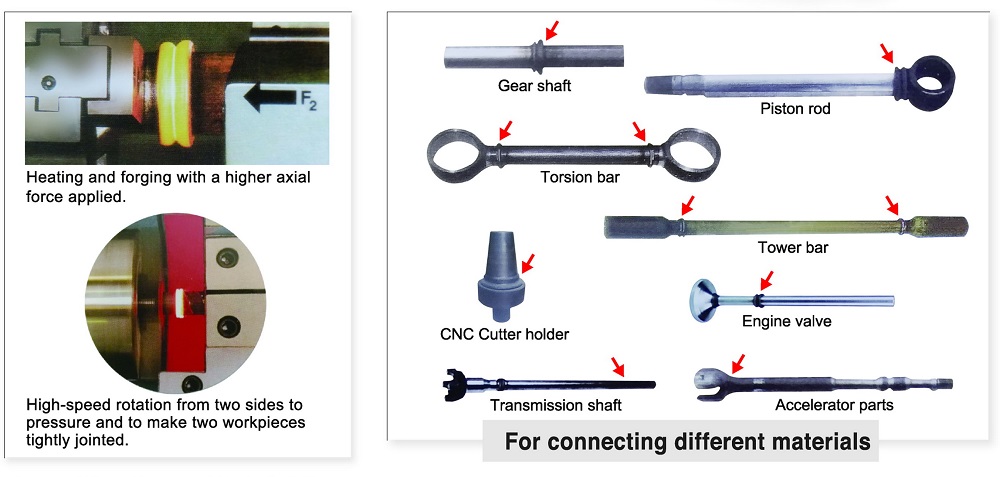
The test data of the model of TH welding machine (welder) which we imported from Japan.

| - |
Max. Bending Load (kg) |
Bending Angle (degree) |
| SS-41 |
S-45C |
SS-41 |
S-45C |
| Base Material |
3270 |
4850 |
150° |
148° |
| Friction Welding |
3440 |
5010 |
150° |
150° |
| Friction Welding & Tempered |
|
5520 |
|
150° |
(SS-41, S-45C equivalent materials, test piece JIS No 4 used)
The max. bending strength after friction welding increases by 10%. The friction-welding and tempered high carbon steel exhibits bending strength equal to the base metal and close not cause breaking even when bent at 150°.
| - |
Yield Point (kg/mm²) |
Tensile Strength (kg/mm²) |
Elongation (%) |
Contragtion (%) |
| SS-41 |
S-45C |
SS-41 |
S-45C |
SS-41 |
S-45C |
SS-41 |
S-45C |
| Base Material |
32.8 |
43.3 |
46.3 |
68.8 |
40.1 |
28.6 |
67.7 |
54.0 |
| Friction Welding |
34.5 |
45.7 |
48.5 |
70.4 |
33.8 |
24.4 |
69.3 |
53.2 |
| Friction Welding & Tempered |
|
|
|
80.2 |
|
28.5 |
|
59.0 |
- Fatigue Strength Under Rotatory Bending
Fatigue limit becomes higher at friction-welding portion. The friction-welded and tempered high carbon steel exhibits fatigue strength equal to the base metal.
Fatigue test under rotary

Since heat generated by the friction welding gives only local influence to the material, the adverse effect is almost negligible. As shown in the microscopic photos no boundary appears where the material welded and joined portion is well dispersed.

Distrbution of hardness after friction welding
